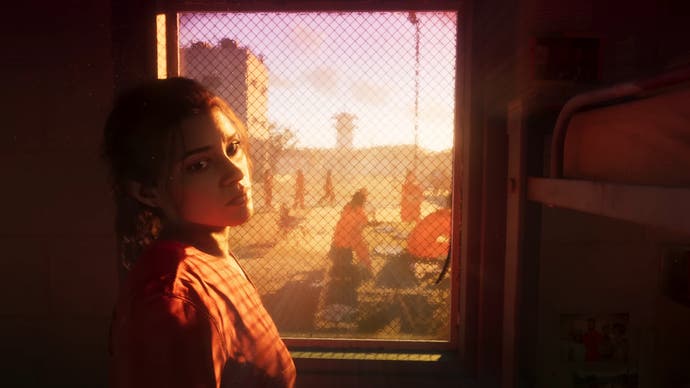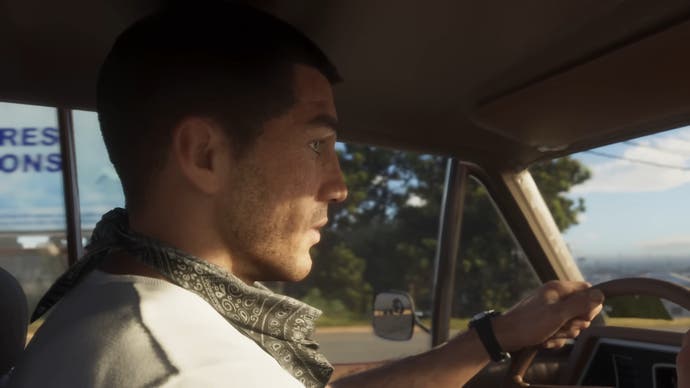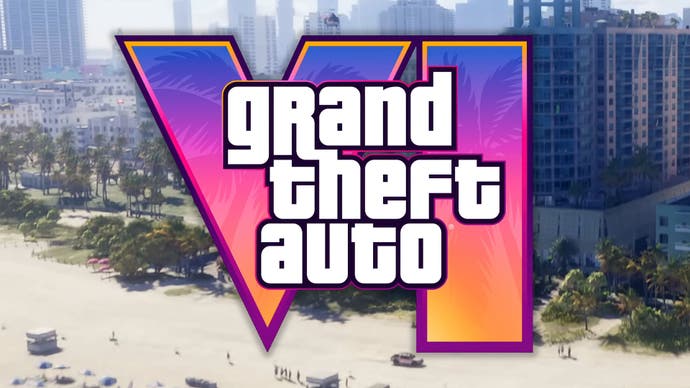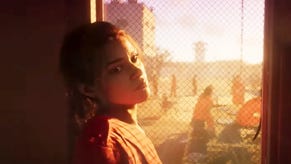Does Grand Theft Auto 6 deliver the generational leap we were hoping for?
DF's technical breakdown of the debut trailer.
The first Grand Theft Auto 6 trailer has arrived - a little ahead of schedule - and despite its minuscule run-time, it's an important piece of media. Not only is this our first look at what's likely to be the biggest game of the generation, it's also our first indication of how Rockstar has innovated its technology for the latest PlayStation and Xbox hardware. It's doubly significant bearing in mind that the only GTA game of the PS4 and Xbox One era was an enhanced version of a title originally built for Xbox 360 and PlayStation 3. In essence, we're looking at a technological leap that encompasses two console generations - and even with the meagre amount of material we have to look at, it's already looking highly promising.
First of all, as always with trailers - particularly debut trailers - we have to examine the plausibility of what we're seeing in a world where even 'in-engine' footage can look a generation apart from the final game. Is this actually real-time footage from the game engine itself running on target hardware? Is this level of quality attainable by today's hardware. The good news is that based on what we're seeing here, we're inclined to believe this is representative of the actual game.
First of all, pixel-peeping apart, there's Rockstar's track record on this kind of thing. Going back to its accompanying media for Grand Theft Auto 5 and Red Dead Redemption 2, what we saw may have benefited from dramatic, cinematic camera angles, but there were enough real-time rendering artefacts to confirm that this was indeed the actual game running at its core. It's the same with Grand Theft Auto 6. Rockstar put out an ultra HD trailer and could have run it from PC with all settings dialled up and at full, native 4K resolution. It did not do that.
- 00:00 Introduction
- 01:53 Is the trailer real-time?
- 07:13 Ray-traced global illumination
- 11:10 Ray-traced reflections
- 17:04 Shadows and hair
- 23:50 Character rendering
- 26:30 Could consoles hit 60fps?
- 30:50 Closing discussion
The presentation on display in the first trailer is clearly running at sub-native resolution, perhaps with a spot of dynamic resolution scaling. Finding countable edges is challenging enough in the latest games and more so in a tightly cut trailer, but the infamous bikini shot suggests a native 1440p resolution, while the shot of the two protagonists bursting through the door towards the end may even be slightly under. Hair rendering is one of the technological highlights of the trailer, yet there are dithering artefacts - easily fixable where the trailer to be pre-rendered or run off a super high-end PC. Just about the only part of the trailer that could be brought into question here concerns the TikTok-style vertical videos, which could be subject to very heavy post-processing that helps give them such a highly authentic look, or they could be pre-rendered.
In the upscaling age where developers are concentrating on higher quality pixels as opposed to native resolution rendering, gamers are often asking why this trade-off is being made. Similarly, we're pretty sure that Grand Theft Auto 6 will be delivering a 30fps presentation too - and it's all about the scale and scope of the game's technological features. There's very strong evidence to suggest that GTA 6 uses two high-end ray tracing features: global illumination and reflections (though there's also indications of a hybrid solution for the latter).
Ray-traced global illumination is used to more accurately approximate the way that light bounces in any given environment, particularly stark in indoor areas with strong outdoor lighting spilling into the space. Whether it's by using a software-based screen-space global illumination solution (as seen in Gears 5's Series X update) or whether by going for the full hardware-accelerated RTGI, the difference made in Grand Theft Auto 6 is stark. It adds convincing, natural lighting to the game. It also adds consistency - characters and objects are perfectly situated within any given scene, as opposed to the glowing or floating effects typically seen by standard rasterisation solutions. Of course, there is the chance that Rockstar is using a hybrid mixture of software and hardware-accelerated solutions, but ultimately, the lighting model looks terrific.


Ray-traced reflections are included, however, and there is some evidence that perhaps it's a hybrid solution. Even so, some elements are pure hardware RT - and that starts with the wing mirrors on the vehicles, which seem to be fully working in showing detail that is not present in screen-space and is too detailed and dynamic to be a simple cube-map. The alternative would be rendering another scene entirely into the texture that sits on the wing mirror which would likely be even more heavy on the GPU than ray tracing. Screen-space reflections are a more common tool, which essentially creates reflections by sampling data on-screen. However, if the data is occluded or not on-screen to begin with, visual artefacts emerge. There is some small evidence of this in the flamingo scene. That said, the TikTok-style video showing a near-naked man shambling through the street does preserve a reflection of him even when a car drives past and occludes the model. The hybrid solution may seem plausible then, but it's hard to say for sure with so little material - and the quick-cut nature of the trailer doesn't help in hammering down the details.
Rockstar North leaning into ray tracing is good news, but there are limits. Ray-traced shadows were part and parcel of GTA 5's upgrades for PlayStation 5 and Xbox Series X, but it looks as though the developer isn't using the effect in GTA 6 - the final shot of the protagonists bursting through the door shows a classic example of old-school shadowmaps in the top-left. It's rare for current generation consoles to run the gamut of ray-traced effects bearing in mind that the RT hardware within AMD's RDNA 2 architecture is fairly weak, and some might argue that the combination of RTGI and RT reflections is already pushing the consoles hard.
Moving on, another key highlight of the trailer is character rendering. It's interesting to note the approach that Rockstar North has taken here - we're looking at a highly stylised virtual world, with matching characters. Revisit The Matrix Awakens and you'll see that the technology is there to deliver photo-realistic characters - but that's simply not the approach the developer wants to take. The characters are expressive with extremely good animation, with an emphasis on prominent eyes and rather smooth skin - worlds apart from Keanu and Carrie-Anne in Epic's celebrated UE5 tech demo. However, Rockstar is still pushing boundaries here - the hair rendering is absolutely terrific.


The bikini-lady shot at 00:39 is a showcase clip designed to show that the developer has truly cracked hair animation, but take a closer look at any of the hair throughout the trailer - Lucia's parole officer at the nine second mark has an astonishingly well-realised shock of curly hair. The dreadlocks at the 53 second point are also superb. It's like a next generation iteration of Lara Croft's classic 'TressFX' if you will, and seems to move the game on from the excellent strand-based hair solution used in Insomniac's PlayStation 5 titles.
But here's the thing: strand-based hair rendering is computationally very expensive. There's GPU budget with strand-based solutions for a limited number of characters. Just one or two is probably best, to be honest. What's remarkable about character rendering - including hair - in this GTA 6 trailer is that it's applied to all characters, including NPCs. The crowd shots seem to include the same technology, and this proliferation, combined with the dithering artefacts may suggest that Rockstar North isn't using Insomniac-style strands. Even so, the technology seems to work for any and all hair styles required, while the overall character/NPC rendering tech is clearly able to deliver highly detailed characters of virtually any shape, size or ethnicity.
Moving on to some of the topics we've been asked to speculate about, the scale and scope of the world does suggest a highly advanced simulation and bearing in mind the relatively constrained capabilities of the Zen 2 architecture found within Xbox Series consoles and PlayStation 5, our bet is that this is a 30 frames per second experience. Graphics can be scaled to accommodate graphics hardware of varying performance levels, but it's far harder to scale back the quality of a game's simulation and effectively reduce CPU load by 50 percent. Perhaps there's an argument in favour of a 40fps mode, but bearing in mind the sheer scale of the game, it makes sense to target a singular rendering and simulation budget.
Next up, the always controversial topic of Xbox Series S. Rockstar has confirmed that the title launches in 2025 on PlayStation 5 and both Xbox machines, so Series S is a lock: the question is how the developer will make this port happen. Our issues with the console have never been about the concept of a weaker GPU - and the 4TF vs 12TF differential is often cited as the major issue in bringing Series X games to Series S. More problematic from our perspective is the memory difference: 12.5GB of available memory on PS5, 13GB on Series X and a baseline of 8GB on Series S. System resources can be disabled and more RAM given back to games on the junior Xbox, but it's still a massive gulf that is hard to overcome, particularly when ray tracing turns out to be quite memory intensive.
While it may make sense to have some kind of fallback system if RT isn't viable for Series S, we can't see it being hugely desirable for Rockstar from a development standpoint - especially when RT global illumination as a standard has so many advantages over rasterised solutions, simply in terms of workflow. Still, a robust fallback or alternative to RT may have utility further down the road when the inevitable PC version arrives. That said, perhaps GTA's target market may have powerful enough hardware by the time it eventually appears - according to Alex's look at the Steam Hardware Survey, around 10.5 percent of users have GPUs on par or more powerful than an RTX 3080 - which in itself is around 80 to 100 percent faster than the current-gen consoles.
So that's where we are with GTA 6 based on the limited - but still revealing - material we have right now. The generational leap is real and we can't wait to see more.


















